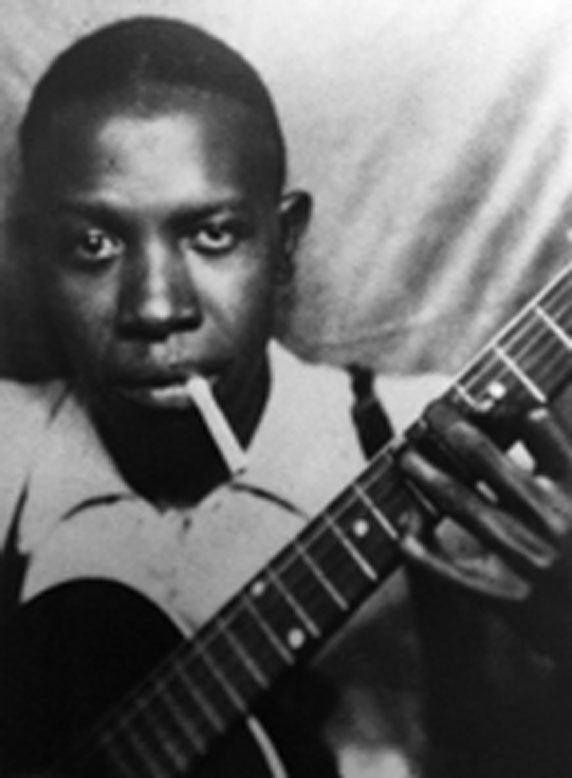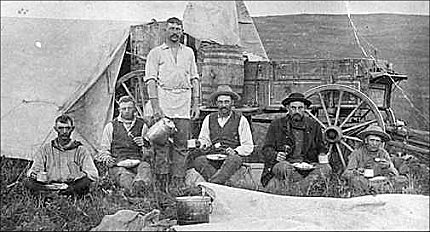 It can be noted that the blues origins stem from the African slaves that were forced over to American. The blues first took form of simple work songs and eventually developed into something bigger. It developed into its own genre with numerous styles and has become woven into the fabric of American music. The foundation of what makes the blues a relative of folk music is that "...blues songs are adapted and passed along in traditional folk manner" (Wald 111)much like the folk songs of immigrants that came to the new world. The passing down of songs from generation to generation is the life blood of folk music. The passing down of songs is one of the corner stones of the blues. In folk music there are aspects within the music that can be found from other cultural folk music. The blues has been "...quoted with some lyrics that were popular with colored soldiers in France"(Wald 111). There are major foundations in folk music that are found in the blues and are major corner stones of it.
It can be noted that the blues origins stem from the African slaves that were forced over to American. The blues first took form of simple work songs and eventually developed into something bigger. It developed into its own genre with numerous styles and has become woven into the fabric of American music. The foundation of what makes the blues a relative of folk music is that "...blues songs are adapted and passed along in traditional folk manner" (Wald 111)much like the folk songs of immigrants that came to the new world. The passing down of songs from generation to generation is the life blood of folk music. The passing down of songs is one of the corner stones of the blues. In folk music there are aspects within the music that can be found from other cultural folk music. The blues has been "...quoted with some lyrics that were popular with colored soldiers in France"(Wald 111). There are major foundations in folk music that are found in the blues and are major corner stones of it.
But there are also aspects in the fabric of the blues that are considered to stray away from the ways of folk music. One major part is that the blues is often "...regarded as a pop rather than folk style specifically, as a variety of ragtime" (Wald112). To some people regard he blues as popular music rather than apart of folk music.
 Folk music, especially the blues, and commercial interest have interacted since the early twentieth century. It began when"commercial record companies began seriously recording regional country, blues. and gospel artists simultaneous to radio's first days" (Lornell 51). As these folk styles became popular within the regions they originated from there became an increasing want to record and broadcast the music. These songs recordings would be advertised in "newspapers and magazines advertisement...in monthly releases" (Lornell 51). This interaction does affect these cultural traditions because it forms them into a main stream mold that transforms the style into what they people want to hear rather than keep it traditional. It is great that folk songs of a people are broadcast out throughout the nation. But with that the folk music seems to lose its value and originality.
Folk music, especially the blues, and commercial interest have interacted since the early twentieth century. It began when"commercial record companies began seriously recording regional country, blues. and gospel artists simultaneous to radio's first days" (Lornell 51). As these folk styles became popular within the regions they originated from there became an increasing want to record and broadcast the music. These songs recordings would be advertised in "newspapers and magazines advertisement...in monthly releases" (Lornell 51). This interaction does affect these cultural traditions because it forms them into a main stream mold that transforms the style into what they people want to hear rather than keep it traditional. It is great that folk songs of a people are broadcast out throughout the nation. But with that the folk music seems to lose its value and originality.1.http://musicartistreviews.com/wp-content/uploads/2011/06/imgres2.jpeg
2. http://www.markgooch.com/users/MarkGooch13815/images/MarkGooch138151482668.jpg
3.http://cdn.thedailybeast.com/content/dailybeast/articles/2013/09/22/do-blues-musicians-need-to-be-really-really-old/jcr:content/image.crop.800.500.jpg/1379802165908.cached.jpg
(URLs from top to bottom)














